Key components and topologies
In the following, we will discuss the key components of the battery storage system and see how it integrates with solar PV.
Operation overview
The challenge is to recover surplus solar energy to charge batteries during the day and then discharge those batteries to assist with the night time energy demand of the home. Batteries are DC storage devices and your household appliances require an AC supply so we have a similar challenge to a standard PV system, converting DC to AC with the use of an inverter.
Let's recap on what a typical solar PV system looks like: -
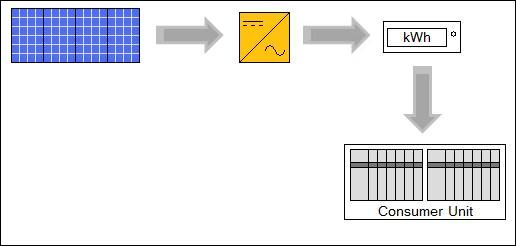
Figure 5 – Typical solar PV system (simplified)
The drawings in this section have some components omitted for clarity.
The sketch shows the solar panels feeding a DC supply into an inverter which optimises the PV performance and converts the energy into AC. This is fed through a generation meter which records all of the energy produced from solar. Finally, this is connected to the grid supply via your consumer unit.
We'll now look at how the batteries are added to the solar system. There are two methods of connection, an AC coupled system and a DC coupled system.
AC coupled storage
The sketch below shows how we have added an AC coupled battery storage system to solar PV: -
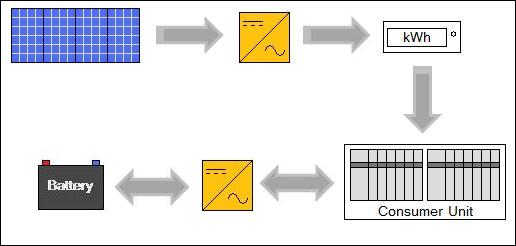
Figure 6 – Solar PV system with AC coupled storage (simplified)
From figure 6, you can see that another inverter has been added to the system. But the inverter is actually a battery charge controller too and so is a bi-directional device.
During solar hours, the charge controller closely monitors how much energy is being generated from solar, how much energy is being consumed by the household and uses the difference (assuming a surplus) to charge the battery.
When the household load exceeds the solar contribution (at night), the stored energy in the battery is converted to AC and provides energy for your home demand in exactly the same way as the PV system did during the day. On occasions, say late afternoon when the battery has sufficient charge but the PV is unable to meet the household demand, both inverters will be running together in parallel.
Once the battery has discharged to its limits (DOD), the system will stop and you will take from the grid in the usual way. This process is repeated each day.
This design is ideally suited as a retrofit option to an existing PV system. Relatively easy installation (parallel grid) and compatible with pretty much any existing PV system.
One of the major benefits of this solution is that the battery system is added to the ‘grid side’ of your generation meter. This is important when you consider the ‘round trip’ losses discussed in previous paragraphs. Imagine losing all those solar units on the DC side, before they pass through your generation meter! Those of you on generous Feed-in-Tariff (FiT) rates would not appreciate losing 15% of your revenue.
DC coupled storage
The sketch below shows how we have added a DC coupled battery storage system to solar PV: -
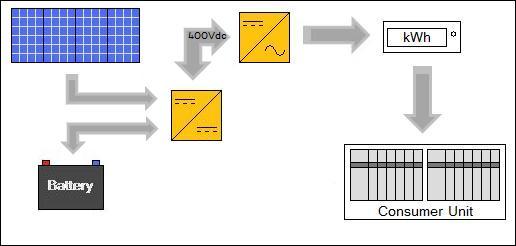
Figure 7 – Solar PV system with DC coupled storage (simplified)
At first glance, the DC coupled system looks a little more complex and there are some variations and complexities in the design which we’ll discuss.
There is a vast difference in typical DC voltages from a series (string) of solar panels (100Vdc to 600Vdc) and a battery store (12Vdc to 48Vdc) which presents a problem for an existing PV inverter. To solve this, figure 7 shows a new DC to DC converter which provides a fixed DC voltage regardless of whether the energy comes from high voltage solar panels or low voltage batteries. Either way it will provide a stabilised fixed voltage (typically around 400Vdc) to satisfy the operating range of the solar inverter.
But this introduces another problem. We mentioned in section 5.1 that a PV inverter ‘optimises’ the power from the solar panels as well as converting from DC to AC. But it can no longer do this; it is being supplied with 400Vdc regardless of the solar conditions. So, the new DC to DC converter takes on the role of providing optimisation from solar (known as Maximum Power Point Tracking or MPPT). It therefore needs to be compatible with your solar panels and string configuration.
And talking of strings, some PV installations have dual tracking inverters (dual MPPT), typically for east/west installations or other design considerations.
Most DC to DC converters available today have only 1 tracker, so we configure the system like this: -
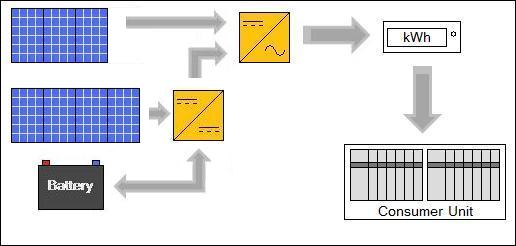
Figure 8 – Dual solar PV system with DC coupled storage (simplified)
So, things are beginning to get a little more complicated now. Note that the DC to DC converter is optimising one string from the solar panels as well as looking after the batteries whereas the original PV inverter is optimising the other solar string. If there is an imbalance in the string sizes (as drawn), it is sensible to load the battery system onto the larger of the two strings. Note that the battery system must then be sized according to the single string rather than the whole of the PV array.
To tidy things up, there is an option to integrate the DC to DC converter and solar inverter into one ‘box’, this is known as a hybrid solution: -
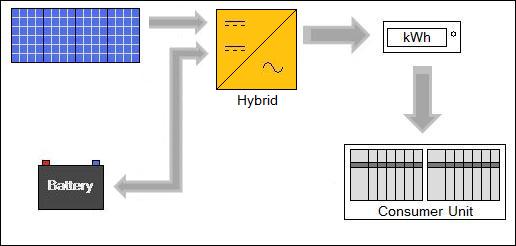
Figure 9 – Hybrid solar PV system with DC coupled storage (simplified)
Still only a single tracker option at present but compare figure 9 with figure 7.
Note that dual tracking DC coupled options are coming to market later in 2016 and SolaSave will have these available.
Configuration summary - AC versus DC
Considering some of the complexities with DC coupled systems, they do not easily lend themselves to retrofitting to existing PV installations. There are many types of PV systems with different inverters, different panels, string configurations and other issues which would suggest that an AC coupled system is often the best solution.
Note too, round trip battery losses in a DC coupled system are always lost before the energy is ‘seen’ by the generation meter and so your readings will be lower, resulting in a financial disadvantage (from FiT revenue) when compared to an AC coupled system.
For a brand new PV installation that is to include batteries, the DC coupled system is ideal as there is less duplication of components (particularly the hybrid version) which saves on costs.
You also have the option to install a hybrid system which is ‘battery ready’. You can deploy the PV system immediately but defer the battery purchase until a later date; in the meantime, the hybrid inverter will function as a standard PV grid inverter. When you’re ready, simply add the batteries in the future when the technology and/or pricing have improved.
In summary, for retrofitting an existing PV system, an AC solution is generally best and for new PV installations, a DC solution is generally best.
